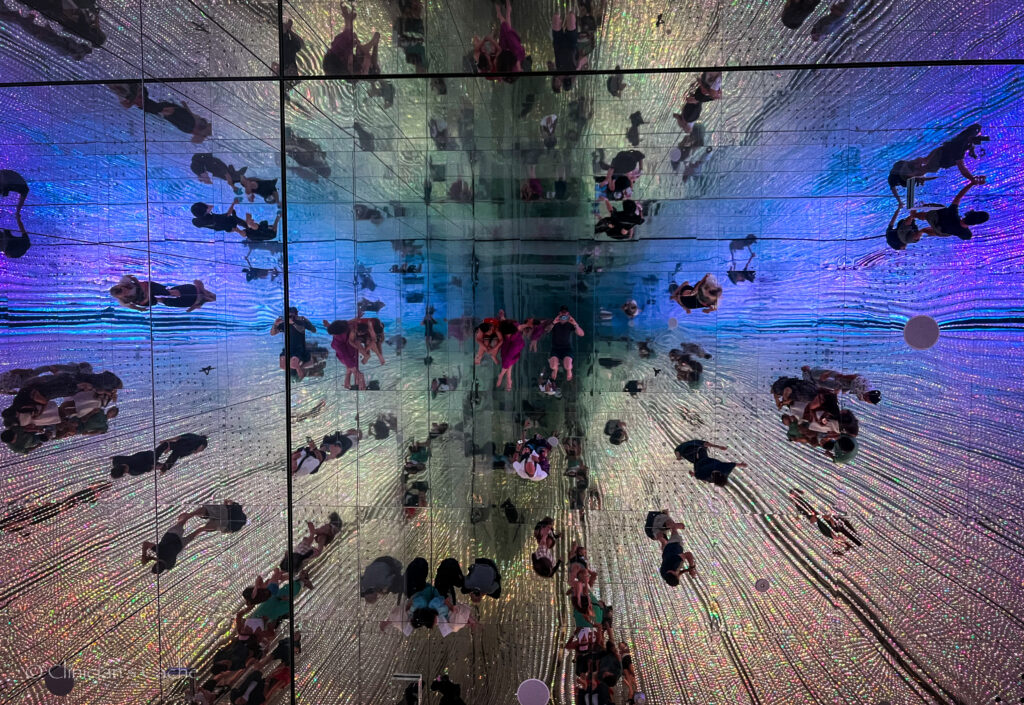Imagine standing in the middle of Shibuya Crossing, where up to 3,000 people cross at once during peak hours.
The neon signs pulse overhead, a cacophony of sounds swirls around you, and the energy of the world’s busiest pedestrian crossing threatens to overwhelm your senses. Pure, organized chaos.
For many, it’s exciting.
For us neurodivergent travelers?
It could be either our biggest challenge or our most incredible adventure.
Hey there, fellow neurodiverse explorers! I’m Chadwick, a Licensed Professional Counselor specializing in trauma therapy with ADHD (later diagnosed as AuDHD), and I’ve gone from nearly having a meltdown in Akihabara to capturing some of the most stunning photos of my life in those same vibrant streets.

Trust me when I say that Tokyo isn’t just manageable for neurodiverse travelers – it can be absolutely awe-inspiring when you know how to navigate it.
In this comprehensive neurodivergent Tokyo travel guide, we’ll transform potential sensory overload into unforgettable experiences.
Whether you’re rocking AuDHD like me, navigating the autism spectrum, or exploring with ADHD, I’ve got your back with strategies that actually work in the chaos of Tokyo.
Understanding Tokyo’s Sensory Landscape

Let’s dive into what makes Tokyo such a unique sensory experience.
Picture this: I’m standing in the heart of Akihabara, where every surface seems to pulse with light and life. The massive video screens flash anime characters while J-pop music streams from multiple directions. The air carries a mix of ramen, yakitori, and that distinct urban energy that’s uniquely Tokyo.
The Sensory Symphony of Tokyo:
1. Visual Input:
- Multi-story video screens and LED advertisements
- Complex subway maps and signage systems
- Intricate architectural details blending modern and traditional
- Constant movement of crowds and traffic
2. Auditory Experiences:
- Train station jingles and announcements
- Street performers and game centers
- Multiple languages creating a linguistic tapestry
- The surprisingly peaceful moments in temple gardens
3. Tactile Sensations:
- The press of crowds during rush hour
- Various textures from ancient temple wood to sleek modern surfaces
- Temperature changes between heated stores and cool streets
- The gentle sway of trains (which can be either soothing or challenging)
4. Olfactory Input:
- Food stalls and restaurants
- Incense from temples
- Seasonal changes (cherry blossoms in spring!)
- The unique scent of the subway system
For our neurodiverse brains, this sensory cocktail can be both overwhelming and fascinating.
During my first visit, I found myself completely frozen outside a pachinko parlor, my ADHD brain trying to process every flashing light and sound simultaneously. Trying to decide where to go and what to do next with a sea of unlimited options.
But here’s where our neurodiversity becomes a superpower: once I learned to channel that heightened sensory awareness, I started noticing details that many travelers miss – the intricate patterns in temple designs, the choreographed flow of crowd movements, the subtle changes in train station melodies that hint at their unique identities.
Common Trigger Points and Solutions:
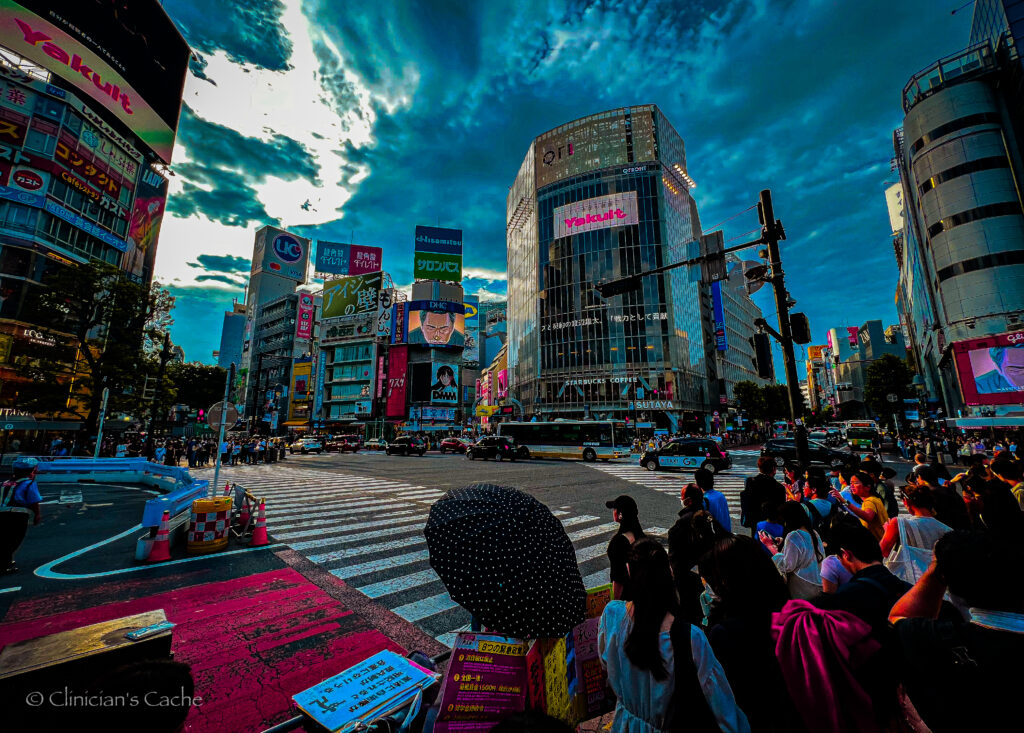

High-Intensity Areas:
- Shibuya Crossing
- Akihabara electronics district
- Shinjuku Station during rush hour
- Pachinko parlors
- Game centers
Peaceful Retreats:
- Meiji Shrine gardens
- Ueno Park quiet corners
- Small neighborhood shrines
- Department store roof gardens
- Early morning temple visits
Pre-Trip Preparation: Setting Yourself Up for Success
As someone who once made the rookie mistake of booking a hotel in the heart of Kabukicho (hello, sensory overload central!), let me save you some stress with proper pre-trip planning. Remember, our ADHD/AuDHD brains thrive on a mix of structure and flexibility – we just need to create the right framework.
Accommodation Strategy
First things first: your home base can make or break your Tokyo experience. Here’s what to look for:
Location Sweet Spots:
- Choose areas like Meguro, Daikanyama, or parts of Setagaya for a balance of accessibility and calm
- Look for hotels near parks or temples for easy sensory breaks
- Consider proximity to major train stations (but not too close – the constant announcements can be overwhelming)
Room Considerations:
- Request higher floors to reduce street noise
- Look for rooms with blackout curtains (crucial for managing sleep with time changes)
- Consider booking a room with a small sitting area for decompression time
Pro tip: Those capsule hotels might look cool, but if you’re sensory-sensitive, invest in a proper hotel room. Trust me, having your own space to decompress is worth every yen.

Creating a Flexible Itinerary
Here’s where I apply what I call the “Anchor Point Method” – a game-changer for ADHD travelers:
Morning Anchors (Choose One):
- Quiet temple visits (before tourist crowds)
- Park walks for grounding
- Local coffee shop routine
Afternoon Options (Mix and Match):
- High-energy exploration periods
- Cultural activities
- Shopping or market visits
- Photography sessions
Evening Wind-Down:
- Quiet dinner spots
- Garden illuminations
- Rooftop views
- Hotel relaxation time
The Essential Sensory Management Kit
After multiple trips to Tokyo, I’ve refined my sensory emergency kit to these must-haves:

Technology:
- Noise-cancelling headphones (non-negotiable!)
- Backup battery pack and mini-charger
- Offline maps and translation apps
- Phone camera for quick reference photos of directions/signs
Comfort Items:
- Sunglasses (even for indoors)
- Cooling towel/Buff or pocket-size hand fan (lifesaver in summer)
- Favorite snacks from home
- Stress ball or small fidget toy
Clothing Strategy:
- Layers and Merino wool shirts for temperature regulation
- Comfortable walking shoes (you’ll hit 20,000+ steps easily)
- Light rain jacket (doubles as a sensory barrier in crowds)
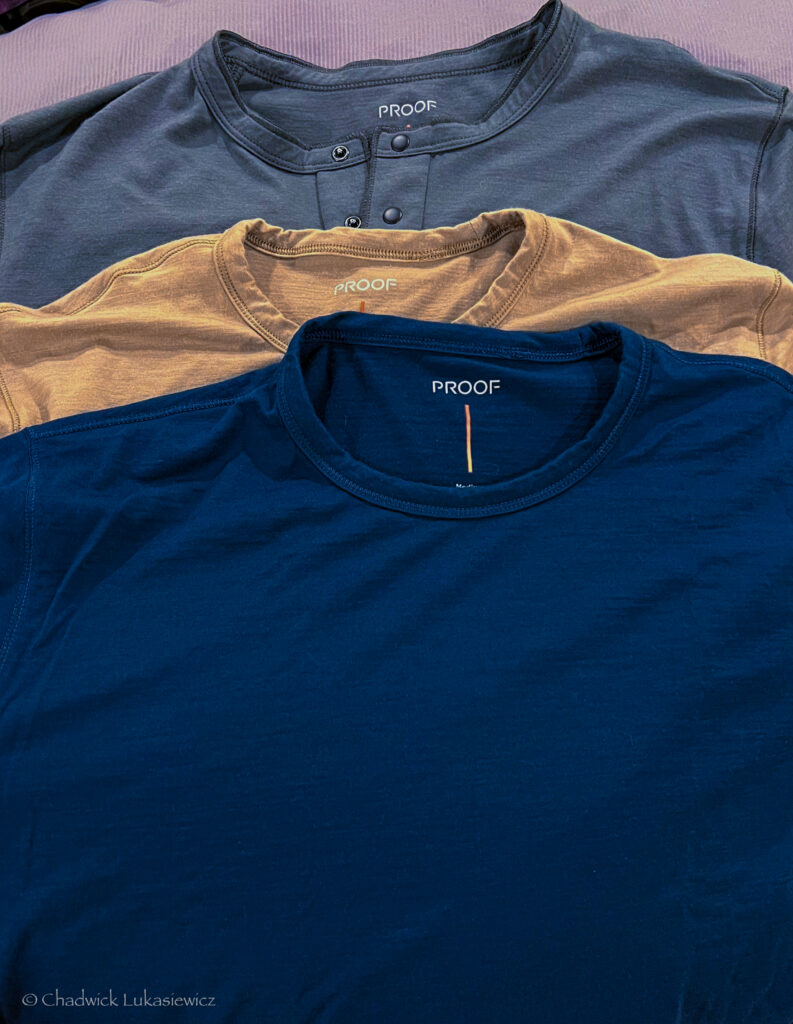
Preparation Timeline
One Month Before:
- Start adjusting sleep schedule gradually
- Learn basic Japanese phrases
- Research quiet spots near major attractions
- Download and test essential apps
One Week Before:
- Check weather forecasts
- Prepare a detailed packing list
- Save offline maps and travel documents
- Set up international phone service
Day Before:
- Pack a sensory kit in a carry-on
- Charge all devices
- Download meditation tracks or calming playlists
- Review first-day game plan
Remember, proper preparation prevents poor performance – but don’t let the planning phase trigger analysis paralysis (a classic ADHD trap I’ve fallen into more times than I can count!). Use these guidelines as a framework, not a rigid rulebook.
Navigating Tokyo’s Transportation System
Picture this: my first time at Shinjuku Station (officially the world’s busiest train stations), armed with my ADHD brain and a vague sense of direction.
Spoiler alert: I got lost. But that experience taught me how to turn Japan’s complex transit system from overwhelming to almost meditative. Let me show you how.

Understanding the Transit Rhythm
Tokyo’s transportation system is like a massive, living organism. Once you understand its patterns, it becomes surprisingly manageable:
Peak Hours (Avoid If Possible):
- Morning Rush: 7:30 AM – 9:30 AM
- Evening Rush: 5:00 PM – 7:30 PM
- Last Train Rush: 11:30 PM – 12:30 AM
Sweet Spot Hours:
- Early Morning: 6:00 AM – 7:00 AM (Perfect for temple visits)
- Late Morning: 10:00 AM – 11:30 AM
- Early Afternoon: 2:00 PM – 4:00 PM
- Evening: 8:00 PM – 10:00 PM
Essential Navigation Tools
Here’s my tried-and-test tech toolkit:
Apps You Need:
- Japan Transit Planner (offline navigation & route-planning)
- Tokyo Metro App (real-time updates + a new tourist focused version)
- Google or Apple Maps (save offline areas)
- GO Taxi App
Physical Tools:

- IC Card (PASMO or Suica) – avoid the sensory stress of buying individual tickets
- Pro Tip: get the digital version in your Apple or Google Wallet
- Station area maps (photograph them with your phone)
- A small notebook for writing down exit numbers and line colors
Station Survival Strategies
As someone who’s both gotten lost in and mastered these stations, here are my top tips:
Creating Calm in Chaos:
- Use the “Walking Meditation” technique: Focus on the colored lines on the floor
- Find your “reset spots” in major stations (my favorite in Shinjuku Station is the basement level NewDays convenience store)
- Practice the “pause and scan” method at decision points
- Look for the elevated waiting areas – they often have seating and a better view of signage
Sensory Management Tips:
🎧 Noise-Cancelling Mode:
- Keep one earbud in for navigation apps
- Use the second for calming music/white noise
- Remove both in transfer zones for safety
👀 Visual Processing:
- Follow the color-coding system
- Use station pillars as landmarks
- Look for English signage (usually in yellow)
Emergency Reset Protocol

When overwhelm hits (and it might), here’s my foolproof reset strategy:
Find a Quiet Spot:
- Station waiting areas
- Platform ends
- Adjacent department store
- Station cafes
Implementation:
- Take three deep breaths
- Drink water
- Check your location on your phone
- Review your next three steps
- Proceed when ready
The Art of Train Travel

Let me share a perspective shift that changed everything for me: treating train rides as meditation sessions. Instead of fighting the experience, lean into it:
Mindful Train Practices:
- Notice the unique jingle of each station
- Count the stops rhythmically
- Observe the city landscape changes
- Use the gentle rocking motion for grounding
Pro Tip: If you’re feeling overwhelmed, find the priority seats during off-peak hours. These areas are usually quieter, and contrary to popular belief, they’re not exclusively for elderly or pregnant passengers when the train isn’t busy.
Remember, getting lost in Tokyo’s transit system isn’t a failure – it’s part of the adventure. Some of my favorite discoveries happened when I took a wrong turn or missed a transfer.
The key is managing the sensory experience so you can stay calm and clear-headed while finding your way.
Finding Peace in the Chaos: Tokyo’s Tranquil Spaces
Let me tell you about the moment that changed my entire Tokyo experience. After a sensory-intense morning in Akihabara, I stumbled upon the serene Kanda Myojin shrine, just blocks away from the electronic mayhem. The contrast was stunning – like someone had turned down the volume on the city while simultaneously offering my overwhelmed senses a gentle reset.
Hidden Urban Sanctuaries




I’ve mapped out what I call “sensory shelter spots” throughout Tokyo. Here are my top recommendations:
Temple and Shrine Havens:
- Meiji Jingu Shrine (Early Morning): Arrive at 7 AM when the massive torii gates first welcome visitors. The morning light filtering through the forest canopy creates an almost ethereal experience.
- Sensoji Temple (Evening): While crowded during day, it transforms into a peaceful haven after 6 PM.
- Gotokuji Temple: The famous “lucky cat” temple is surprisingly peaceful and often overlooked by tourist crowds.
Urban Green Spaces:
- Shinjuku Gyoen: My personal favorite for its three distinct garden styles
- Rikugien Gardens: Perfect for fall colors and quiet contemplation
- Koishikawa Korakuen: A pocket of peace near Tokyo Dome
Pro Tip: Most gardens charge a small entrance fee (usually 200-500 yen), but this actually helps maintain their peaceful atmosphere by limiting crowds.
Creating Your Personal Bubble
Through trial and error (and yes, a few overwhelming moments), I’ve developed what I call the “Sanctuary Strategy“:

Immediate Calming Techniques:
Physical Spaces:
- Department store park floors
- Museum rest areas
- Hotel lobbies
- Book store corners
- Coffee shop window seats
Sensory Regulation Tools:
🎧 Sound Management:
- Nature sounds playlist
- Binaural beats
- Traditional Japanese music
- White noise apps
👁️ Visual Calm:
- Sunglasses
- Blue light filtering glasses
- Baseball cap for light control
- Photos of quiet/calm spaces on your phone
The Art of the Micro-Break
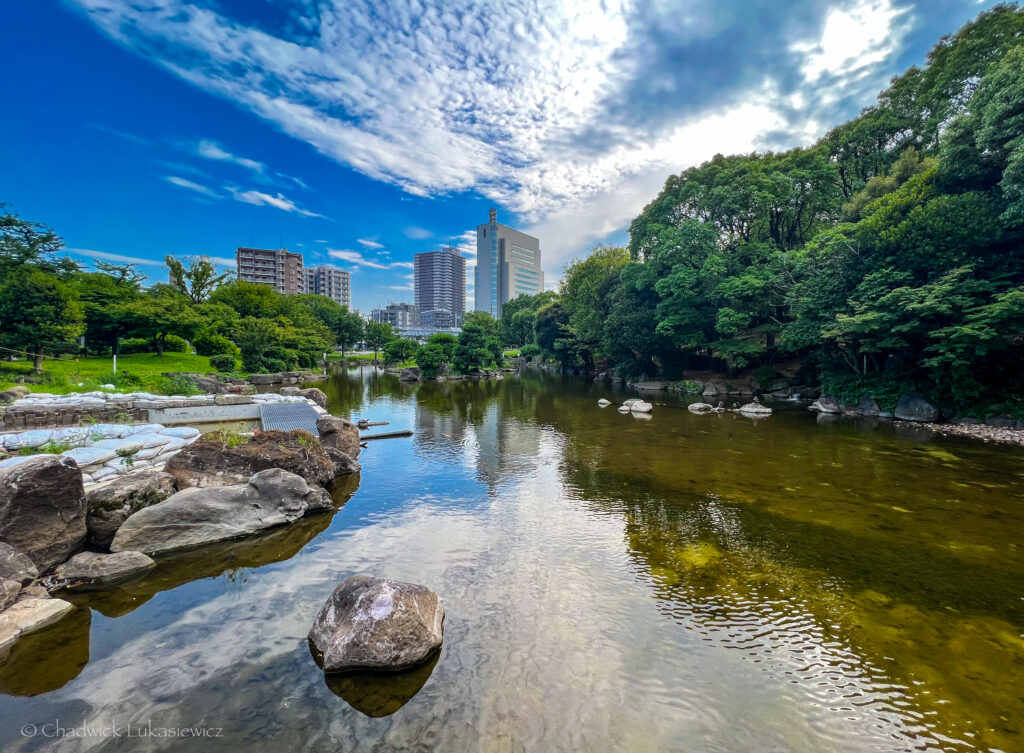
One of the most valuable lessons I’ve learned is the power of strategic micro-breaks. Here’s how I structure them:
5-Minute Reset:
- Find a quiet corner
- Practice box breathing (4 counts in, hold 4, out 4, hold 4)
- Ground yourself by naming:
- 5 things you see
- 4 things you feel
- 3 things you hear
- 2 things you smell
- 1 thing you taste
15-Minute Sanctuary:
- Visit a convenience store for a green tea
- Find a bench in a quiet spot
- Journal one page of observations
- Practice mindful stretching
30-Minute Retreat:
- Visit a local temple
- Enjoy a tea ceremony
- Find a park bench
- Practice photography mindfulness
Mindfulness Practices with Japanese Influence

I’ve found that incorporating traditional Japanese mindfulness concepts helps attune to the city’s rhythm:
Ma (間) – The Space Between:
Ma is the intentional use of space and pauses, emphasizing the beauty found in absence and silence. It teaches us to appreciate the intervals that give meaning to the whole.
- Notice the intentional pauses in Japanese gardens
- Observe the careful spacing in temple architecture
- Find moments of silence between train announcements
- Appreciate the thoughtful gaps between activities

Wabi-Sabi (侘寂) – Beauty in Imperfection:
Wabi-Sabi is the art of finding beauty in imperfection and transience. It encourages acceptance of the natural cycle of growth and decay.
- Embrace the worn stones of ancient temples
- Find charm in weathered street corners
- Appreciate asymmetry in traditional ceramics
- Value authenticity over perfection in experiences
- Accept the imperfect moments in your journey

Shinrin-Yoku (森林浴) – Forest Bathing:
Shinrin-Yoku is the practice of immersing oneself in nature to promote mental and physical wellbeing.
- Immerse yourself in Meiji Shrine’s forest paths
- Practice mindful breathing in city parks
- Engage all senses in garden experiences
- Connect with urban nature spots
- Use green spaces for sensory reset

Ikigai (生き甲斐) – Finding Purpose:
Ikigai is about discovering your reason for being, where your passions and talents converge with what the world needs.
- Align travel experiences with personal interests
- Balance exploration with meaningful activities
- Create photography projects with intention
- Find joy in daily routine abroad
- Connect your journey to larger life goals


Pro Tip: I keep a list of these sanctuaries in my phone’s notes, organized by district. It’s like having a “break glass in case of emergency” kit for your nervous system!
Remember, finding peace in Tokyo isn’t about escaping the city’s energy – it’s about learning to flow with it while honoring your own sensory needs.
Sometimes the most profound moments of peace come when we learn to find stillness within the motion, rather than trying to escape it entirely.
Embracing the Energy: Turning Overwhelm into Adventure

You know that moment when your ADHD brain goes from “this is too much!” to “this is AMAZING!“? That’s what we’re aiming for here.
Let me share how I transformed my initial sensory overload in Shibuya into one of my most profound photography sessions – and how you can harness Tokyo’s energy for your own extraordinary experiences.
Reframing the Chaos
First, let’s talk about perspective shifts. Instead of seeing Tokyo’s intensity as overwhelming, we can view it as a playground for our neurodivergent superpowers:
ADHD Advantages:
🧠 Hyperfocus Opportunities:
- Street photography sessions
- Food exploration missions
- Architecture pattern hunting
- Cultural detail observation
⚡ Quick Processing Benefits:
- Rapid adaptation to train systems
- Pattern recognition in city navigation
- Quick reaction for photo opportunities
- Spontaneous adventure decisions

Autistic Advantages:
🔍 Detail Mastery:
- Traditional ritual observation
- Precise train schedule tracking
- Intricate temple art analysis
- Subtle cultural pattern detection
🌟 Sensory Perception:
- Rich textural awareness
- Sound pattern recognition
- Light/shadow appreciation
- Temperature/weather sensitivity
Photography as a Coping Tool

Here’s where my personal journey took an unexpected turn. My camera became more than just a tool for taking pictures – it transformed into a sensory filter that helped me process Tokyo’s intensity:
Photography Techniques for Overwhelm:
The Focus Method:
- Choose one specific element to photograph
- Follow that theme throughout the day
- Examples:
- Neon signs only
- Architectural details
- Street fashion
- Food presentations
Time-Lapse Projects:
- Find a safe spot with a good view
- Set up your camera for 30 minutes
- Watch the city’s patterns emerge
- My favorite spots:
- Shibuya Sky observation deck
- Shinjuku station overpass
- Akihabara main intersection
- Tokyo SkyTree

Channeling Hyperfocus Productively
Let me share a personal story: During one particularly intense evening in Shinjuku, instead of fighting my ADHD brain’s tendency to notice everything, I decided to lean into it.
The result? A photo series capturing the city’s light reflections amidst a subtle array of thunderstorm clouds that became some of my most compelling urban work.

Hyperfocus Activities:
📸 Visual Projects:
- Color-hunting missions
- Architecture series
- Street life documentation
- Night light photography
🎯 Focused Explorations:
- Food district tours
- Vintage shop hunting
- Temple stamp collecting
- Street art discovery
Creating Structure in Chaos

The key is to create frameworks that allow you to engage with Tokyo’s energy without getting lost in it:
The “Mission” Method:
- Choose a daily theme
- Set specific objectives
- Include reward checkpoints
- Allow for spontaneous detours
Example Mission:
- Theme: “Tokyo Textures”
- Objectives: Photograph 5 different surface types
- Rewards: Try a new café every 2 completed shots
- Spontaneous: Follow interesting patterns when spotted
Sensory Integration Strategies

Over time, I’ve developed what I call the “Gradual Immersion Technique“:
Level 1: Observation Mode
- Find a quiet café with a window view
- Watch the city’s patterns
- Take notes or photos
- Plan your route
Level 2: Controlled Engagement
- Short walks in busy areas
- Specific photo missions
- Limited time experiments
- Quick retreat options ready
Level 3: Full Immersion
- Extended urban exploration
- Social interactions
- Complex photo projects
- Cultural participation
Remember: The goal isn’t to conquer the chaos – it’s to explore it, turning challenges into stepping stones for growth.
Some of my favorite Tokyo moments happened when I stopped trying to control everything and instead let my neurodivergent brain engage with the city on its own terms.
Pro Tip: Keep a “win journal” of moments where you successfully turned overwhelm into opportunity. It’s incredible motivation for future adventures and helps build confidence in your ability to handle intense environments.
Culinary Exploration for the Sensory-Sensitive Traveler
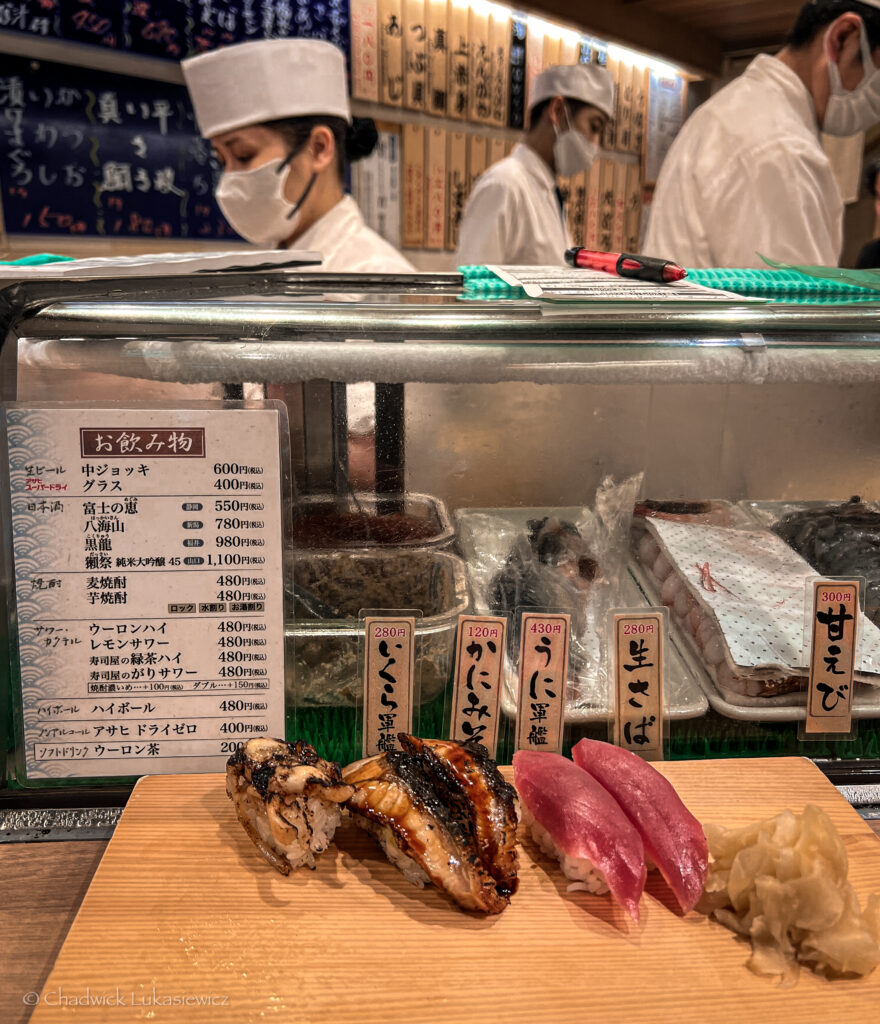
Picture this: my first night in Tokyo, staring at a standing sushi menu with unfamiliar textures, unknown flavors, and rapid-fire decisions to make.
The guys next to me are speaking in Japanese while the sushi chef translates. They wanted me to try their recommendations without knowing what they were!
So, I kicked in the adventure side and remembered my goal to break picky eating habits this trip…and dove in head first. As I expressed my delight in their recommendations they actually cheered and kept ordering us more, which they paid for! It was quite a night.
We may not have spoken the same language, but it was one the most enjoyable meals I’ve ever had…and best sushi!
For a neurodiverse brain, Tokyo’s food scene can feel like sensory roulette. But with the right approach, it can become an extraordinary adventure in controlled exploration.
Understanding Japanese Dining Environments
First, let’s break down the sensory landscape of different dining settings:
Low Sensory Impact: 🍜 Traditional Settings:
- Small neighborhood ramen shops
- Early morning sushi bars
- Private booth restaurants
- Department store restaurants (usually top floor)
Medium Sensory Load: 🍱 Moderate Environments:
- Casual izakayas
- Food courts (off-peak hours)
- Family restaurants
- Tempura counters
High Sensory Engagement: 🍣 High Energy Spaces:
- Conveyor belt or standing sushi
- Robot restaurants
- Busy street food markets
- Themed cafes
My Personal Food Exploration Strategy
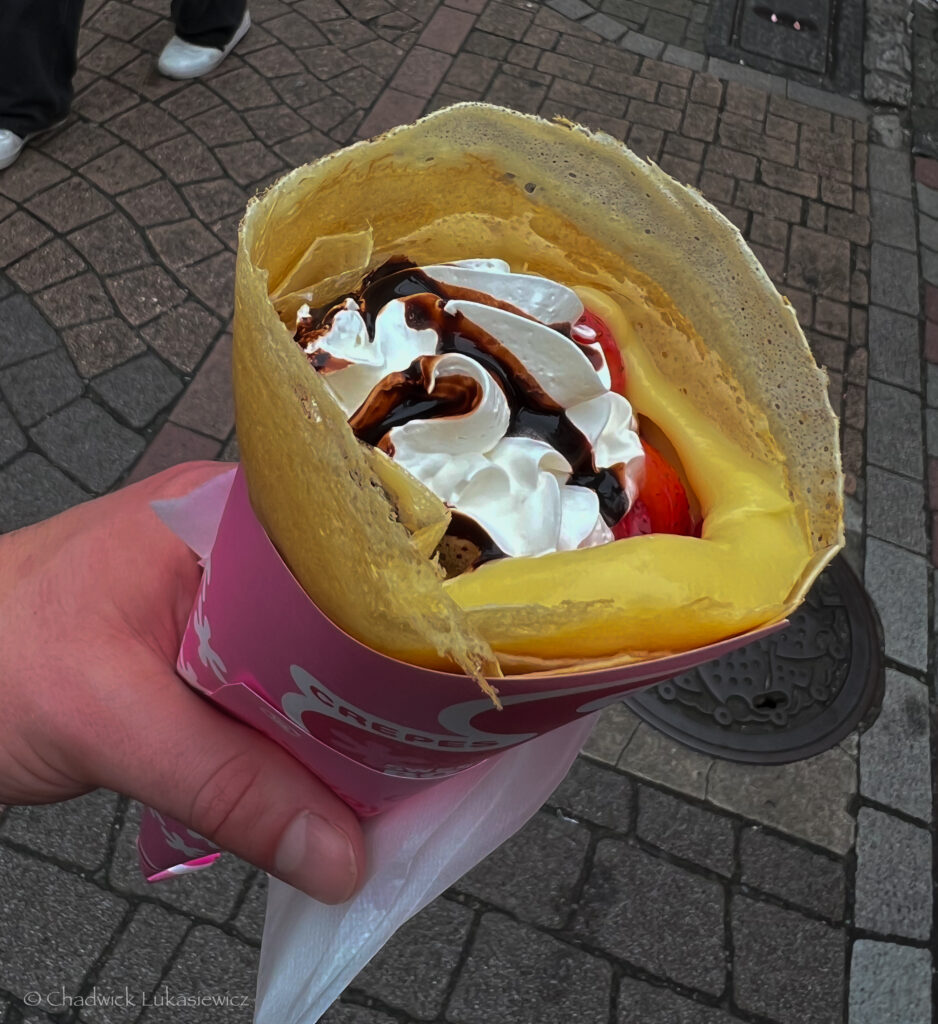
Let me share how I went from anxious eater to confident culinary explorer:
The “Safe Base” Method:
- Start each day with familiar breakfast
- Try one new thing at lunch
- Balance dinner between comfort and adventure
- Always carry safe snacks
Pro Tip: I discovered that Family Mart onigiri (rice balls) make perfect safe foods – they’re clearly labeled, consistent in texture, and available everywhere!
Sensory-Friendly Restaurant Guide
Through much trial and error (and yes, a few sensory overload moments), I’ve developed a system for finding comfortable dining spaces:


Quiet Dining Spots:
Department Store Restaurants:
- Typically quiet atmosphere
- Clear picture menus
- Private booth options
- Consistent quality
Early/Late Dining Times:
- Breakfast: 7:00-8:00 AM
- Late Lunch: 2:00-4:00 PM
- Early Dinner: 5:00-6:00 PM
- Late Night: After 9:00 PM
Communication Strategies
One of my biggest anxiety triggers was communicating dietary needs. Here’s what works:
Essential Tools:
- Translation App (Apple or Google with offline)
- Food allergy/preference cards in Japanese
- Picture menu apps
- Point-and-order strategy
- Basic Japanese food vocabulary
Texture Navigation Guide
For my fellow texture-sensitive friends, here’s my categorized guide:
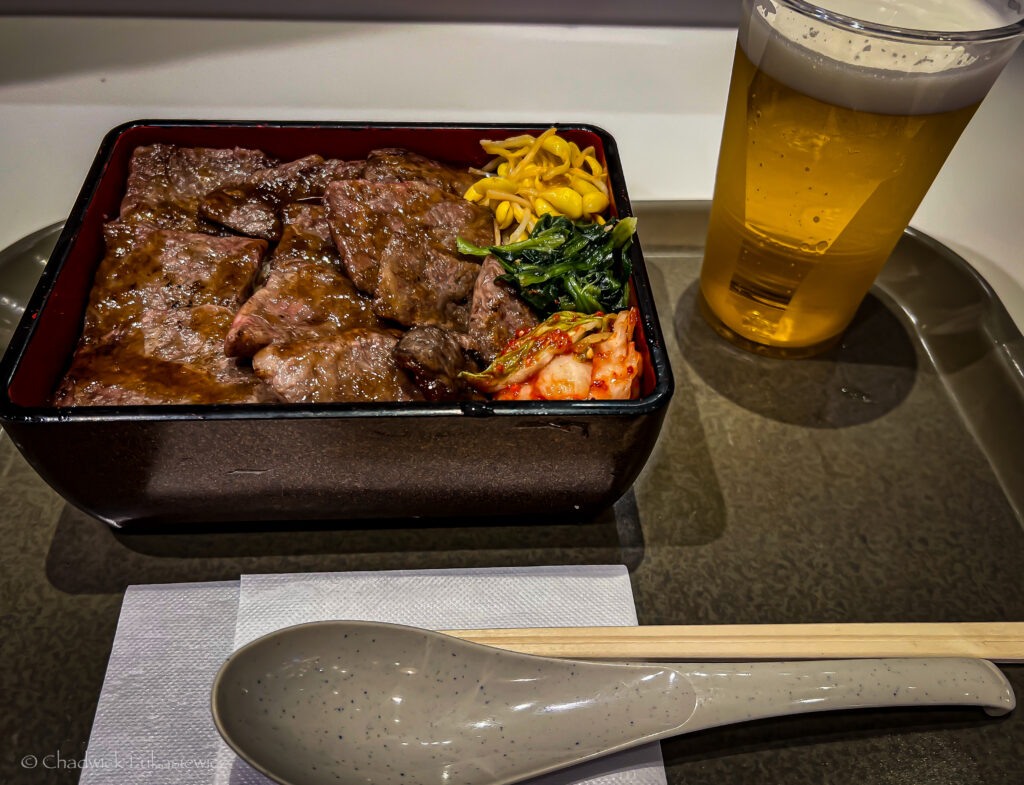
Smooth/Consistent Textures:
- Udon noodles
- Miso soup
- Rice dishes
- Tempura (crispy outside, tender inside)
- Sashimi
Variable Textures (Approach with Awareness):
- Ramen (multiple textures in one bowl)
- Sushi rolls (complex texture combinations)
- Hot pot dishes
- Street food skewers
The Mindful Eating Protocol

When trying new foods, I use this step-by-step approach:
1. Visual Assessment:
- Observe the presentation
- Notice colors and arrangement
- Take a photo (great distraction technique!)
2. Aroma Exploration:
- Take small sniffs
- Note familiar scents
- Allow time to adjust
3. Texture Test:
- Start with a tiny portion
- Have water ready
- Use rice as a neutral base
4. Flavor Journey:
- Take small bites
- Note initial impressions
- Allow flavors to develop
Emergency Reset Strategies
Sometimes things get overwhelming. Here’s my backup plan:
Quick Recovery Tools:
- Keep familiar snacks handy
- Know your safe restaurants
- Have a water bottle ready
- Practice deep breathing between bites
Reset Locations:
- Department store food halls
- International chain cafes
- Hotel restaurants
- Convenience stores
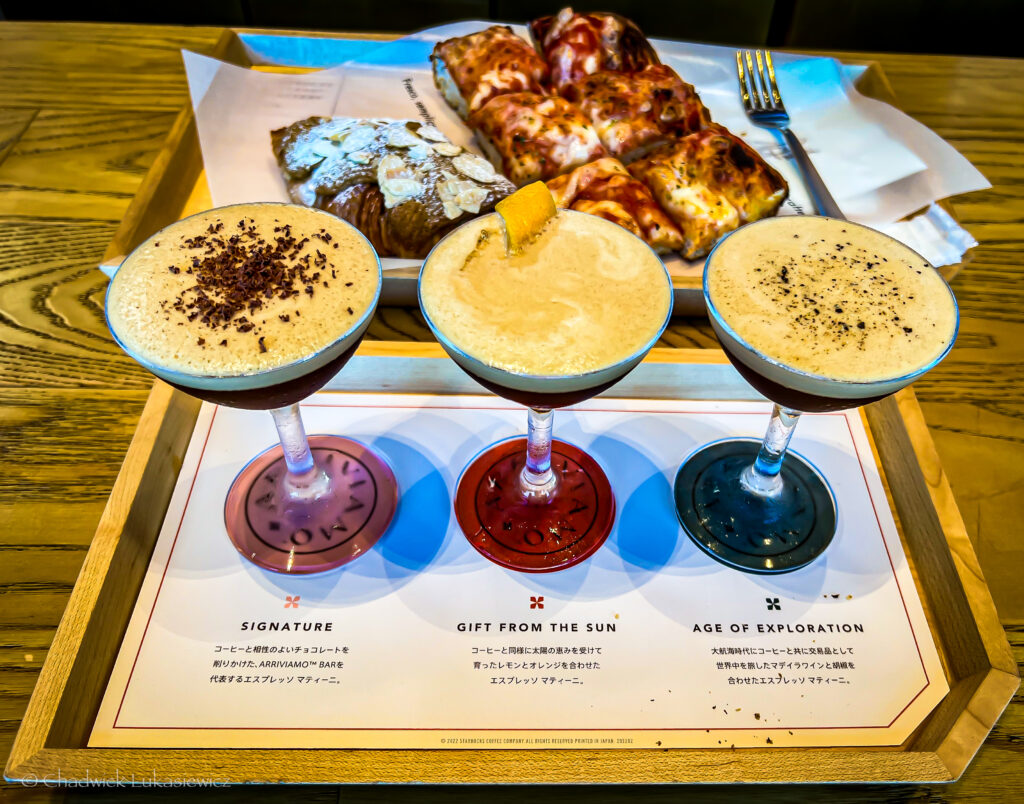
Remember: There’s no shame in having lunch at Starbucks or McDonalds if you need a familiar environment to reset.
Tokyo’s food scene will still be there when you’re ready to explore again.
Social Connection and Communication Strategies

Let me share a moment of truth: standing in a bustling izakaya, surrounded by rapid-fire Japanese conversation, my AuDHD brain trying to process both social cues and sensory input.
It can be overwhelming, right?
But here’s the beautiful thing about Tokyo – the city has taught me that connection transcends perfect communication, and sometimes our neurodivergent traits can actually enhance these interactions.
Understanding Japanese Social Dynamics
First, let’s appreciate how some Japanese social norms actually align well with neurodivergent tendencies:
Neurodivergent-Friendly Cultural Aspects:
🤝 Social Conventions:
- Less expectation for eye contact
- Structured greeting protocols
- Respect for personal space
- Acceptance of quiet observation
🗣️ Communication Style:
- Direct, clear instructions in service settings
- Written information readily available
- Pictorial guides common
- Non-verbal communication accepted

Building Connections Your Way
Through my experiences, I’ve developed what I call the “Authentic Connection Framework“:
Start Small:
- Coffee shop conversations
- Tour group interactions
- Hostel/Hotel common areas
- Restaurant employees/bartenders
Use Your Interests:
- Photography/Special interest groups
- Gaming/Anime cafes
- Art galleries
- Traditional craft workshops
I definitely got lost wandering around Akihabara and Shibuya looking for various video game and nerd-fandom merch. Some of the most fun and spontaneous ADHD moments I had! Just watch that impulsive spending.
Communication Tools and Techniques
Here’s my tested toolkit for bridging the language gap:
Essential Apps:
- Apple Translate (camera function is crucial)
- Written keywords/phrases (in my traveler’s notebook for retention and quick access!)
- Currency Pro or Currency XE (quick, straightforward currency exchange)
- Duolingo (pre-trip basics with gamification!)
- ChatGPT (try it out for translations & voice integration; as well as trip planning!)
Non-Verbal Communication:
👋 Universal Signals:
- Basic gestures (pointing, nodding)
- Written numbers
- Maps and pictures
- Emoji on your phone
Safe Social Spaces
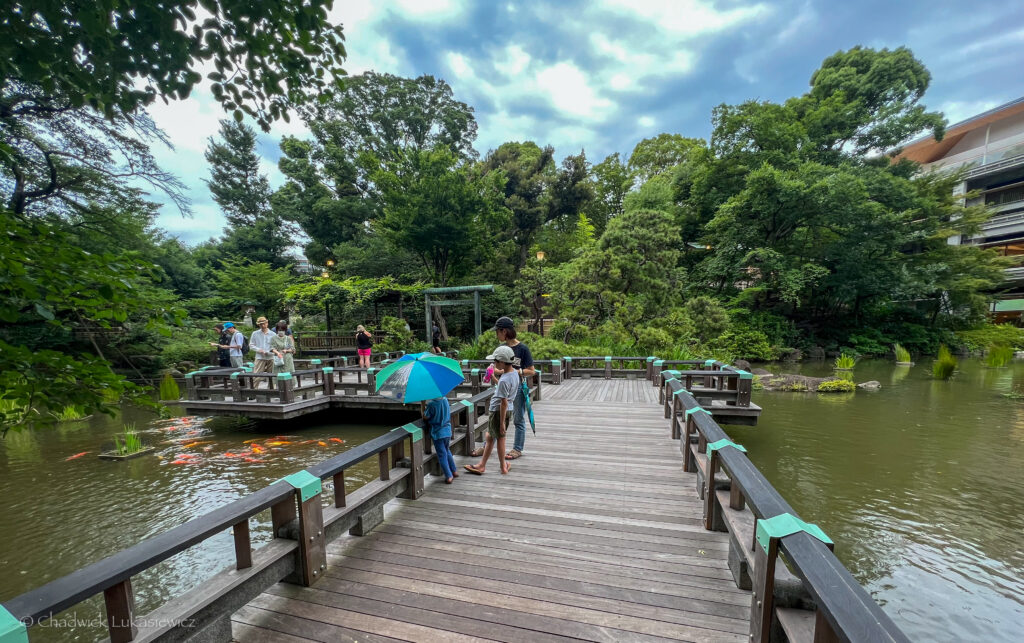
I’ve identified what I call “Social Comfort Zones” throughout Tokyo:
Low-Pressure Social Environments:
Book Cafes:
- Quiet atmosphere
- Built-in conversation topics
- Easy escape options
- Structured interactions
Cultural Centers:
- Organized activities
- Clear social scripts
- Shared learning experiences
- International community
Co-working Spaces:
- Professional setting
- Natural conversation breaks
- Common ground with others
- Predictable environment
Managing Social Energy

For my fellow neurodivergent travelers, here’s my energy management system:
🔋 The Social Battery Tracker:
- Full: Try language exchange events
- 75%: Join guided tours
- 50%: Visit quiet cafes
- 25%: Retreat to solo activities
- Empty: Hotel room reset time
Cultural Sensitivity with Neurodivergent Needs
Learning to balance cultural respect with personal needs has been crucial:
Explain Simply:
- “I need a break/to rest” – Kyūkei ga hitsuyō desu (休憩が必要です)
- “Too crowded” – Komi sugi desu (込みすぎです)
- “Thank you, but I’d like to be alone for a bit” – (Arigatou, demo sukoshi hitori ni naritai desu (ありがとう、でも少し一人になりたいです)
Use Cultural Context:
- Reference being a bit tired
- Mention needing to process
- Express gratitude while setting boundaries
Emergency Social Reset Protocol
When social overwhelm hits, here’s my tried-and-true reset strategy:
Quick Recovery Steps:
- Find a quiet space
- Use grounding techniques
- Text a friend from home
- Review your next planned activity
- Reset with a familiar routine
Remember: It’s perfectly okay to take social breaks, even in the middle of activities. Japanese culture generally respects personal space and privacy, making it easier to step away when needed.
Sensory Emergency Kit: Be Prepared, Not Scared

Let me tell you about the night I found myself in Shinjuku’s neon canyon, when every sign seemed to pulse directly into my overstimulated brain in the uncomfortable heat and humidity. That moment taught me the invaluable lesson of having a well-prepared sensory emergency kit.
Think of it as your neurodivergent traveler’s insurance policy – you might not always need it, but when you do, it’s absolutely priceless.
Building Your Perfect Kit
I’ve refined this kit through multiple trips, panic moments, and sensory victories:
Essential Physical Tools:
🎧 Audio Management:
- Noise-cancelling headphones or earbuds
- Backup earbuds
- Downloaded white noise
- Favorite calming playlist
👁️ Visual Relief:
- Blue light filtering glasses
- Eyedrops (for some reason mine are always dry, so its relieving)
- Peaked cap or soft-brim hat
- Eye mask for emergencies (multi-purpose Buff use)
- Sunglasses (even for indoors)
🧘♂️ Tactile Comfort:
- Favorite stim/fidget toy
- Cooling neck towel (also multi-purpose Buff)
- Stress ball or putty
- Soft fabric swatch
The Digital Safety Net
Your phone becomes command central for sensory management:
Calm Spaces:
- Quiet Place Finder
- Park Locator
- Temple/Shrine Mapper
- Hotel Directory
Regulation Tools:
- Breathing Exercise Timer
- White Noise Generator
- Meditation Guide
- Grounding Exercise Prompts
Personal Story: During a particularly overwhelming afternoon exploring in the peak July heat, my pre-downloaded meditation tracks and noise-canceling headphones created an instant sanctuary in a quiet corner of a department store coffee shop. Those 10 minutes of reset time saved my entire day.
Creating Your Sensory Map

One of my most valuable tools is what I call the “Tokyo Sensory Map“:
Safe Zones by District:
🏢 Major Areas:
- Shibuya:
- Starbucks Reserve (quiet corner spaces)
- Miyashita Park (rooftop breathing space)
- Mark City (clean restrooms, quiet corridors)
- Shinjuku:
- Takashimaya Times Square (peaceful top floor)
- Gyoen Garden (nature retreat)
- Isetan Department Store (less crowded corners)
- Akihabara:
- Yodobashi Camera (quiet floor corners)
- UDX Building (peaceful pocket parks)
- Side street shrines
Emergency Reset Protocols
I’ve developed what I call the “RESET” system:
R.E.S.E.T. Method:
- R – Retreat to nearest safe space
- E – Engage grounding techniques
- S – Sensory tools deployment
- E – Evaluate next steps
- T – Transition when ready
Preventive Strategies
The best emergency kit is one you rarely need to use. Here’s how to prevent overload:
Daily Prevention Plan:
Morning Preparation:
- Check weather (affects sensory load)
- Review planned activities
- Pack kit accordingly
- Set intention for the day
Regular Check-ins:
- Use 1-10 scale for sensory load
- Schedule deliberate breaks
- Monitor energy levels
- Track food and hydration
Evening Reset:
- Hotel room decompression
- Kit replenishment
- Next day preparation
- Journal reflections
The Grounding Toolkit
When things get intense, these techniques have saved me countless times:
Quick Grounding Exercises:
🧘♂️ 5-4-3-2-1 Technique (Japanese Style):
- 5 things you see (spot a kanji character)
- 4 things you feel (touch your train pass)
- 3 things you hear (listen for train melodies)
- 2 things you smell (find food aromas)
- 1 thing you taste (green tea always works)
Physical Grounding:
- Press feet firmly into ground
- Find cool surfaces to touch
- Hold handrails or solid objects
- Use pressure points on hands
Remember: Having a sensory emergency kit isn’t about avoiding experiences – it’s about having the confidence to fully engage with Tokyo, knowing you have reliable tools to manage any overwhelming moments.
Pro Tip: Keep your most essential items in an easily accessible pocket or small bag. My kit is organized in a small sling bag that I can reach without even needing a backpack.
Conclusion: Embracing Your Neurodiverse Tokyo Adventure

As we wrap up this guide, it takes me back to the last night, sitting in a quiet corner of a Tokyo hotel room, reflecting on how far we’ve come from that initial moment of sensory overwhelm at Shibuya Crossing.
Through each challenge and triumph, one truth has become crystal clear: our neurodivergent minds aren’t a hindrance to experiencing Tokyo – they’re a unique lens through which we can discover the city’s hidden magic.
Key Takeaways for Your Journey
Your Neurodivergent Superpowers:
🌟 ADHD Advantages:
- Spontaneity leading to hidden gems
- Hyperfocus for photography
- Pattern recognition for navigation
- Quick adaptation to changes
🎯 Autism/AuDHD Strengths:
- Detailed observation of culture
- Appreciation for routine and ritual
- Deep engagement with interests
- Unique sensory experiences
Remember These Foundational Strategies
1. Preparation Without Rigidity:
- Create flexible frameworks
- Build in buffer time
- Know your safe spaces
- Trust your instincts
2. Sensory Management:
- Regular environment checks
- Proactive breaks
- Tool kit accessibility
- Comfort zone expansion
3. Social Navigation:
- Choose your engagement level
- Use interest-based connections
- Honor your energy limits
- Celebrate small victories
Your Turn to Explore: Finding Joy in the Chaos

The real victory is_not in conquering the chaos, but in finding your own rhythm within it._
Remember:
- Every sensory challenge overcome is a victory
- Your unique perspective is valuable
- Perfect travel days don’t exist, but perfect moments do
- Growth happens outside comfort zones, but at your own pace
Final Words of Encouragement
To my fellow neurodivergent travelers: Tokyo isn’t just waiting for you – it’s ready to reveal itself in ways that only our unique minds can appreciate.
Your ADHD might help you discover a hidden ramen shop that becomes your new favorite. Your autistic attention to detail might help you notice a temple detail that others walk right past. Your AuDHD might help you connect seemingly disparate experiences into a profound understanding of this amazing city.
Go forth with confidence, knowing that your neurodiverse brain isn’t just capable of handling Tokyo – it’s specially equipped to discover its wonders in ways others might never experience.
Safe travels.
Chadwick
Some of the links in this post are affiliate links, meaning I earn a commission if you click through and make a purchase – at no additional cost to you. As a neurodivergent traveler and mental health professional, I only recommend products I’ve personally tested and found genuinely helpful in managing AuDHD symptoms, sensory needs, or travel challenges. Read our full affiliate disclosure in our privacy policy. And remember: your unique needs matter most when choosing tools for your journey!

